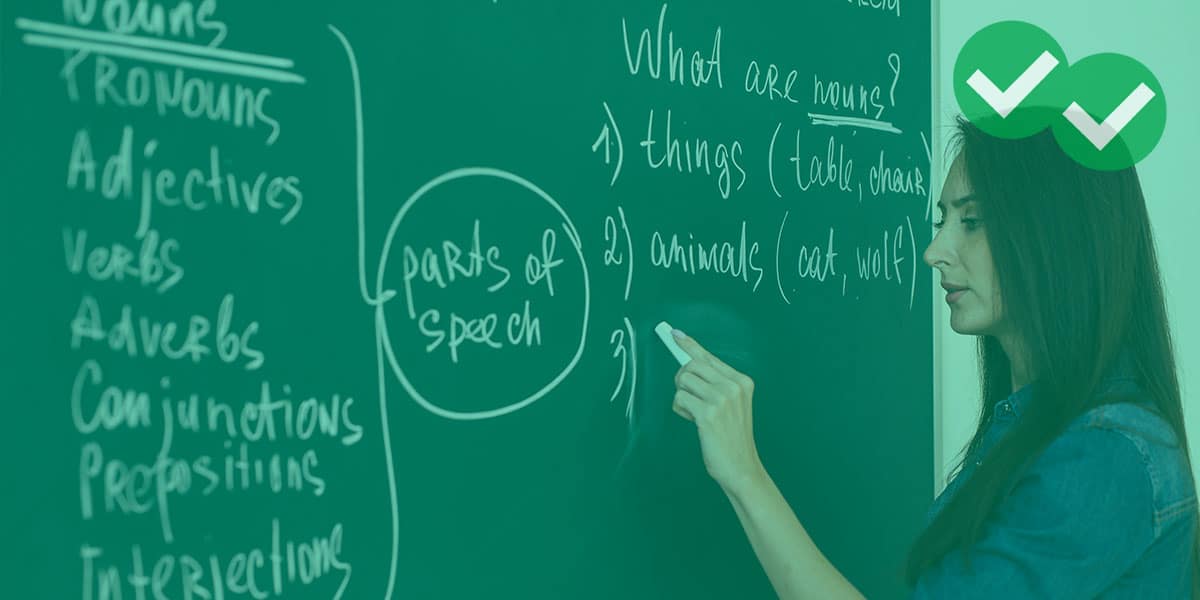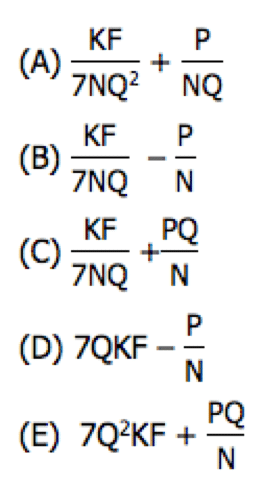
First, a hard Sentence Correct for practice.
1 The term “Immaculate Conception”, a doctrine that the Roman Catholic Church formally proclaimed in 1854, not referring to the conception of Jesus, which, according to Christianity, occurred miraculously despite his mother Mary being a virgin, but to the conception of Mary in the womb of her mother, Anne, despite the fact that they believe this conception occurred with ordinary procreative means.
(A) that the Roman Catholic Church formally proclaimed in 1854, not referring to the conception of Jesus, which, according to Christianity, occurred miraculously despite his mother Mary being a virgin, but to the conception of Mary in the womb of her mother, Anne, despite the fact that they believe this conception occurred with
(B) that the Roman Catholic Church formally proclaimed in 1854, did not refer to the conception of Jesus, that, as Christianity says, occurred miraculously even though his mother Mary was a virgin, but to the conception of Mary in the womb of her mother, Anne, despite the fact that this conception is believed to be occurring by
(C) of the Roman Catholic Church formally proclaimed in 1854, referring not to the conception of Jesus, that in Christianity occurred miraculously with his mother Mary being a virgin, and to the conception of Mary in the womb of her mother, Anne, despite the fact that this conception is believed to have occurred in
(D) of the Roman Catholic Church formally proclaimed in 1854, refers not to the conception of Jesus, which, according to Christianity, occurred miraculously even though his mother Mary was a virgin, but to the conception of Mary in the womb of her mother, Anne, despite the fact that this conception is believed to have occurred by
(E) of the Roman Catholic Church formally proclaimed in 1854, referred not to the conception of Jesus, that, as Christianity says, occurred miraculously when his mother Mary was a virgin, and to the conception of Mary in the womb of her mother, Anne, despite the fact that they believe this conception occurred by
I will draw on this sentence for examples, and give a full discussion at the end of this post.
Tip #1: You DON’T need to know grammar vocabulary
The analysis of grammar has a whole boatload of fancy terms and fine distinctions: adjectival phrases, gerunds, subjunctive, appositive phrases, the past perfect progressive, etc. etc. You don’t need to know any of these terms for the GMAT. You need to be comfortable with the grammar itself, but you do not need to know the words used to describe the grammatical forms.
We who teach this grammar need to use these terms to discuss the grammar. You may find it helpful to remember these terms only to make sense of our discussions. When we say such-and-such is a prepositional phrase, or such-and-such is a gerund, it’s helpful to be familiar enough to follow our discussion and recognize whether something is correct or incorrect.
The GMAT will NOT ask you about these grammatical terms. Your only job is to recognize which forms are correct and which are incorrect, and beyond that, you have absolutely no need for the terms.
Tip #2: Clauses vs. phrases
A clause is the fundamental building block of a sentence. A clause contains a noun + a verb. Every sentence has at least one main clause — it may have two or more joined by a conjunction such as “and”, “or”, “but.” Another word for a main clause is an independent clause: it can stand independently as its own sentence.
A dependent clause begins with a subordinate conjunction and, following that opening word, also has a full noun & verb structure. Folks like to remember the subordinate conjunctions in English according to the “ON A WHITE BUS” mnemonic:
O = only if
N = now that
A = although, after, as
WH = while, when, whereas, whenever, wherever, whether
I = if, in case
T = though
E = even though, even if
B = because, before
U = until, unless
S = since, so (that)
The words following the subordinate conjunction must be a full clause, and if you removed the subordinate conjunction, that clause could also stand on its own as a complete sentence. Many dependent clauses are modifiers, but substantive clauses are dependent clause that act as a noun and could, therefore, serve as the main subject of the sentence.
A phrase is any structure that is not a clause. Phrases come in a bewildering variety: infinitive phrases, participial phrase, gerund phrases, prepositional phrases, appositive phrases, etc. Most phrases are modifiers. The only time a phrase will play a vital role in the structure of a sentence is when a gerund phrase, which acts as a noun, is the subject or direct object of the main sentence
Tip #3: fluff vs. deep structure
If I give you the sentence “Mike walks to work”, chances are very good you can follow the grammatical structure of that sentence: subject = “Mike”, verb = “walks”, prepositional phrase = “to work”. Obviously, you will never see a four-word sentence on the GMAT Sentence Correction.
The GMAT Sentence Correction sentences are long and wordy, like the practice sentence above. In order to analyze these, you will need to remove “fluff” — that is to say, the decorative modifying phrases, which add useful information but are not essential to the grammatical structure. Only the core noun + verb units of the main clauses are core, and then within each dependent clause, we also need a noun + verb structure. Here’s an example of “getting rid of fluff.” Start with the Sentence Correction problem above:
The term “Immaculate Conception”, a doctrine that the Roman Catholic Church formally proclaimed in 1854, not referring to the conception of Jesus, which, according to Christianity, occurred miraculously despite his mother Mary being a virgin, but to the conception of Mary in the womb of her mother, Anne, despite the fact that they believe this conception occurred with ordinary procreative means.
First, let’s just put parenthesis around every prepositional phrase:
The term “Immaculate Conception”, a doctrine that the Roman Catholic Church formally proclaimed in 1854, not referring (to the conception) (of Jesus), which, according (to Christianity), occurred miraculously (despite his mother Mary being a virgin), but (to the conception) (of Mary) (in the womb) (of her mother), Anne, (despite the fact) that they believe this conception occurred (with ordinary procreative means).
The phrase “a doctrine that ….” is an appositive phrase modifying “Immaculate Conception”, and “Anne” is an appositive modifying “mother” — put both of those in parenthesis:
The term “Immaculate Conception”, (a doctrine that the Roman Catholic Church formally proclaimed in 1854), not referring (to the conception) (of Jesus), which, according (to Christianity), occurred miraculously (despite his mother Mary being a virgin), but (to the conception) (of Mary) (in the womb) (of her mother), (Anne), (despite the fact) that they believe this conception occurred (with ordinary procreative means).
Let’s drop all this fluff and see where we are:
The term “Immaculate Conception”, … not referring …. which, according …. occurred miraculously … but … that they believe this conception occurred
Notice that some the dependent clauses have some full noun + verb structures (noun = “which”, verb = “occurred”; noun = “they”, verb = “occurred”), but … and this is BIG … the main subject “the term ‘ Immaculate Conception’” has NO VERB. The word “referring” is a participle, and we need a bonafide verb there.
By removing fluff, we can see the deep structure — where is the main noun? where is the main verb? is either AWOL? Here, removing the fluff reveals that we simply don’t have a main verb — that’s a HUGE problem with answer choice (A). Technically, answer choice (A) is not a complete sentence.
Tip #4: Verbs vs verb forms
Verbs, the action words, are the most important words of almost any sentence. First of all, when different answer choices give the action of the sentence both as a verb (“… decided to …”) and as a noun (“…a decision to …”), almost always the verb-form of action will be correct.
Verbs, as legitimate verbs, have several forms. They have difference tenses, including not only the simple past & present & future, but also the progressive tenses and the perfect tenses. They also have three moods: ordinary descriptive language (known as the indicative mood); commands (known as the imperative mood), and the subjunctive mood. In all of these forms, verbs are still acting as verbs, and therefore can play the role of the main verb of a sentence or the main verb within a subordinate clause.
There are some verb forms, though, that take on other grammatical roles. A participle acts most often as an adjective. A gerund acts as a noun. Both of these can take direct objects and other modifiers, but neither of these can act as the main verb of a sentence. they are verb forms, but they are not acting as verbs.
Particularly tricky are the “-ing/” forms of verbs, which at times can act as verbs (“My roommate is dancing”) and at times can be a participle (“My dancing roommate …”) or a gerund (“Dancing is my roommate’s favorite pastime.”) It’s always crucially important to determine: which verb forms are actually acting as verbs, and which verb forms are playing some other role?
Tip #5: solve SC with splits
Do not read all five answer choices word for word. The way to solve GMAT Sentence Correction is to read the original sentence, then scan the answers choices looking for splits. Look for individual words and phrases are that flip-flop between two or three choices among the answers, and use those to eliminate answers. I will demonstrate this in the solution below.
Tip #6: READ!
This is the tip that no one likes, because it’s not a quick fix. The best way to integrate an understanding of grammar is to read high level material regularly. If English is not your native language, you must practice reading every day, and continually push yourself to advance to harder and harder material. If English is your native language, do not rely on your ear alone. There is far too much atrociously bad grammar in the world: many forms that are 100% wrong on the GMAT Sentence Correction appear regularly in commercials and in the entertainment media. The Economist magazine, the New York Times, the Wall Street Journal, the New Yorker, and the Atlantic Monthly are all excellent sources of high level English. That is the level to which you ear must become accustomed.
Solution to the practice question
1) Split #1: the prompt, (A), has no main verb. This is the missing verb mistake. In all five choices, the main subject is “the term ‘ Immaculate Conception.’” Both (A) and (C) have a participle, “referring”, rather than a full verb as required, so both are incorrect. Choices (B) and (D) and (E) each have a full verb, although the past tense of “did not refer” or “referred” is funny here — we are talking about the meaning of the term in the present time, so we suspect that (D) is the only correct choice.
Split #2: choices (A) & (E) have the mystery pronoun “they” in the phrase “… the fact that they believe ….” This pronoun has no proper antecedent, an unforgiveable sin on GMAT Sentence Correction, so these two choices must be wrong. Choices (B) & (C) & (D) have the passive construction “….the fact that this conception is believed …” In this sentence, it’s not important who believes this — what is important for the logic of the sentence is simply that this is a belief. This is a rare instance on the GMAT Sentence Correction on which a passive construction is perfectly acceptable.
Split #3: the correct idiom is “by such-and-such means.” When we are discussing the means that brought about a particular result, the correct preposition to use is “by”. (A) & (C) use “with” and “in”, respectively, both incorrect. Only (B) & (D) & (E) have the correct preposition.
Split #4: four choices have “occurred” correctly in the past tense, but (B) has “occurring” a present progressive form, which is incorrect: the conception of Mary in the womb of Anne is not a current event, so (B) is completely wrong.
Split #5: we need a strong contrast between “conception of Jesus” and “Mary was a virgin.” In (A), the preposition “despite” is a strong contrast word, but then this followed by a structure of the form: [preposition][noun][participle]. On the GMAT, this is incorrect. The GMAT doesn’t like that much action packed into a prepositional phrase: action should properly have its own clause. Choices (A) and (C) both make this mistake, so both are incorrect. Choice (E) has the word “when”, which is not quite logically correct, and which certainly do not provide strong enough contrast, so this is not correct. Only (B) and (D) have the strong contrasting subordinate conjunction “even though”, followed by a correct clause.
For all these reasons, (D) is the best answer.






Leave a Reply